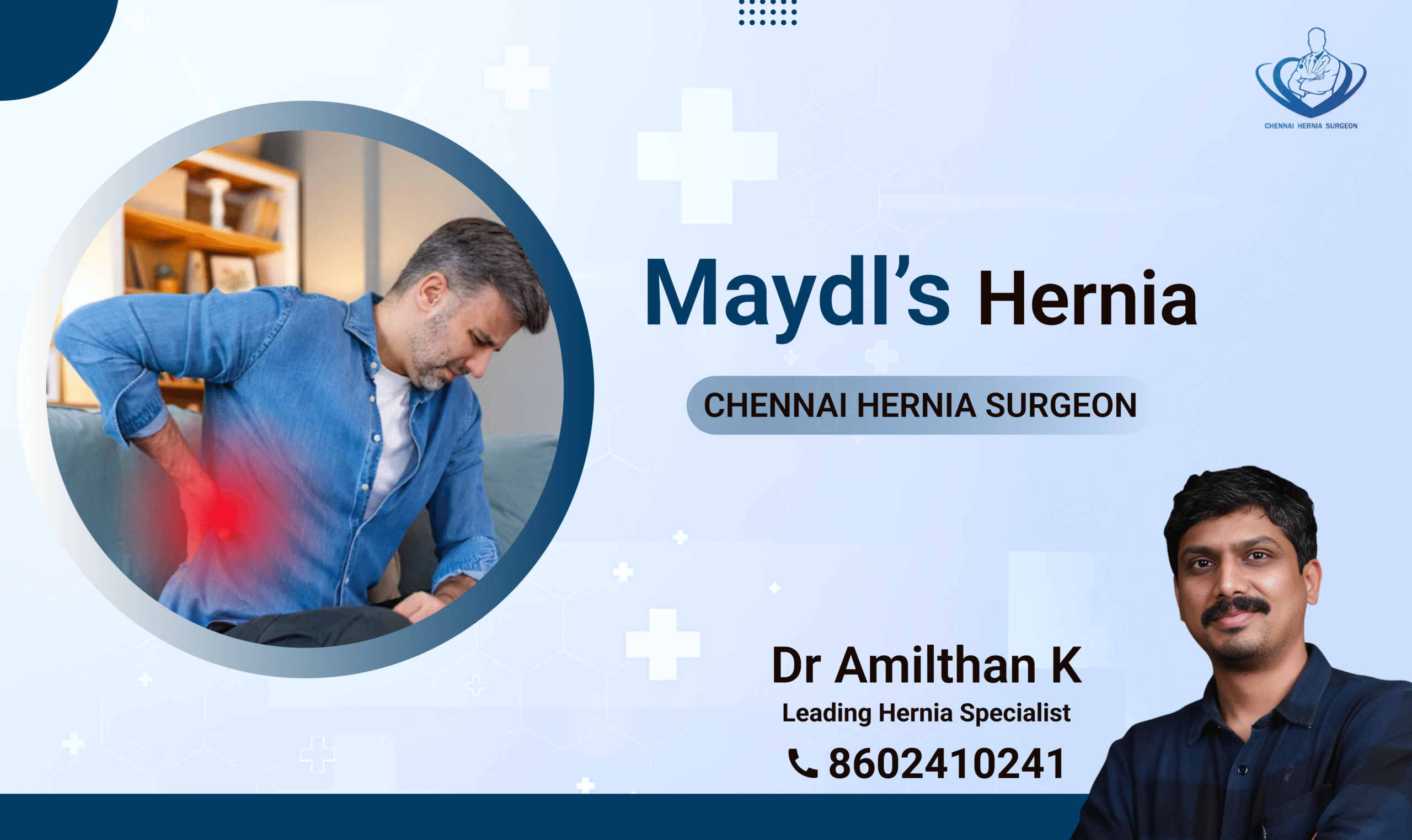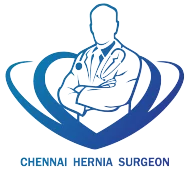A hernia is a bulge or swelling that happens when an organ or tissue pushes through a weak muscle and protrudes through it. It is visible when the patient laughs, coughs, or does some physical activities.
Hernias need to be treated as soon as diagnosed, as they may lead to serious complications if left untreated. Herniptomy is one such method to treat inguinal hernias. In this article, let’s look at what herniotomy is and what the procedure entails.
Table of Contents
ToggleWhat is Herniotomy?
Herniotomy is a surgical procedure done to treat uncomplicated inguinal hernias in children. In this procedure, the doctor makes small incisions near the hernia sac and pushes the bulging part back to its original place.
The incisions are then stitched together, or a special patch is used so the hernia doesn’t reappear. Children will be given a mild anesthetic during the procedure so that they won’t feel any pain. They might feel sore after waking up, but it will disappear after some time.
Herniotomy is most commonly done in children because the risk of strangulation of an untreated hernia sac is higher. This can risk the health of the kids’ bowels and testicles.
Is Herniotomy a Major Surgery?
Herniotomy is a minor surgery that can be performed as an outpatient procedure. The patient can come in the morning, undergo the surgery, stay in the hospital for a while, and return to their homes after the procedure.
Here are the steps patients undergo during the procedure.
- Patients should check in the hospital one or two hours before the procedure. This can give them time to relax and get to know the surgical team performing the procedure.
- Hernia operations usually take about 30–90 minutes, based on the type of hernia and the severity of the issue.
- Post-surgery, the patient must stay in the hospital for an hour or two to recover and not make sudden movements right after the surgery.
- The patient is free to leave for their home once they feel better.
Overall, from the time the patient arrives at the hospital to the time they leave, the time taken will be about 4.5–5.5 hours.
What are the Indications of Herniotomy?
There are some indications that doctors must look for to assess if a herniotomy needs to be performed on the patient. Below are some of them.
Presence of inguinal hernia
The presence of inguinal hernia in children is the main sign that indicates the need for a herniotomy. You can identify this hernia by looking for any bulges in the groin when the kids laugh, cry, cough, or do some heavy activity.
A herniotomy should be done to remove the hernia and avoid further complications.
If the hernia is large
A large hernia can cause major complications, especially in children. These hernias need to be removed surgically to prevent them from reappearing again.
If pain and discomfort increases
Hernias can be painful, especially for kids who can’t take much pain. Herniotomy should be done to relieve the pain and discomfort caused by the hernias.
If there is a risk of incarceration
Incarceration, otherwise called strangulation, is the case where the tissue or organ gets trapped in the hernia sac and is cut off from blood supply and oxygen. A herniotomy is performed to prevent this condition from occurring.
When non-surgical methods don’t work
Herniotomy is recommended when non-surgical methods like observation or truss (a supportive device) can’t treat the condition.
Conclusion
Lorem Ipsum is simply dummy text of the printing and typesetting industry. Lorem Ipsum has been the industry’s standard dummy text ever since the 1500s, when an unknown printe
Herniotomy is a minor surgery that must be performed to treat inguinal hernias in children. It is an important surgery that must be performed to prevent the hernia from causing further complications like strangulation and necrosis (tissue death).
Visit your nearest laparoscopic surgeon immediately and treat the hernia before it is too late.
r took a galley of type and scrambled it to make a type specimen book. It has survived not only five centuries, but also the leap into electronic typesetting, remaining essentially unchanged. It was popularised in the 1960s with the release of Letraset sheets containing Lorem Ipsum passages, and more recently with desktop publishing software like Aldus PageMaker including versions of Lorem Ipsum.
Dr. K. Amilthan MBBS., MS., FMAS., FALS.
Heal Your Hernia Now:
- 20+ Years of Experience
- 1,000+ Surgeries
Your Journey to Wellness Begins with us.
FAQ's
Herniotomy is commonly performed to treat inguinal hernias (hernia in the groin) and umbilical hernias (hernia in the belly button).
A herniotomy and herniorrhaphy are both performed to treat hernia and only differ in the methodology. Herniotomy is performed by making an incision near the affected area and pushing the bulging organ and tissue back into place.
Whereas a herniorrhaphy is performed by making an incision and sewing the weakened tissue back together.
A herniotomy usually takes about 30–90 minutes, based on the type of hernia and the severity of the issue.
- bleeding, infections, mild discomfort at the incision site, and
- recurrence of the hernia.

Dr. Amilthan
Dr. Amilthan is a renowned laparoscopic hernia surgeon based in Chennai, with over 20 years of experience in general surgery. He completed his MBBS and MS in General Surgery at Kilpauk Medical College and Government Royapettah Hospital in Chennai.
- All Posts
- Hernia Blog

Which Doctor should you consult for Hernia? You can Consult a general surgeon or a hernia specialist for evaluation and...

A hernia occurs when an organ or any other part of your body pushes through the muscle and surrounding tissue...

An inguinal hernia occurs when the organs push through and bulge against the weak muscles of the abdomen. An effective...

